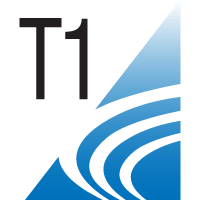Legal, Ethical, and Professional Issues (LEPI)
LM311 - The Way Forward for Audiology: Lessons Learned from Optometry and Dentistry
Friday, April 21, 2023
9:45 AM - 10:45 AM PDT
Location: Rooms 608-609 ** 705 Pike
Earn 0.1 CEUs

David A. Fabry, PhD
Chief Innovation Officer
Starkey
Eden Prairie, MinnesotaDisclosure(s): Starkey: Employment (Ongoing)
Lead Presenter(s)
Abstract:
Clayton Christensen was the first to coin the phrase “Disruptive Innovation” in his 1997 book The Innovator’s Dilemma. Although it may feel as though Audiology’s position in the healthcare landscape is unique, there have been other professions that have been disrupted by low-cost providers, OTC devices and third-party payers. This session will review lessons learned from several disciplines, including optometry and dentistry, for purposes of examining similarities and differences for the way forward. Audience participation is expected.
Summary:
For decades, Audiologists have been confronted by patients and other professionals regarding the frustration that hearing aids "should be more like eyeglasses", when in fact, the issue is primarily related to sensorineural versus conductive deficits for the majority of patients with visual issues, especially for individuals younger than 65 years of age. The combination of 1) the aging Baby Boom generation, 2) increased awareness for comorbidity between hearing and vision, and 3) increased prevalence of "back of the eyeball" issues in aging individuals, has contributed to improved understanding of the challenges faced by individuals with visual and hearing sensory deficits. In addition, the rapid growth of cosmetic dentistry use by the adult population has also raised parallels between the disciplines of Dentistry and Audiology.
This session will provide and overview of each of the three disciplines, and evaluate the way that technology (e.g. crowns, dental implants, digital tooth alignment, reading glasses, Artificial Intelligence, Lasik, etc), professional services (OTC, Artificial Intelligence, third-party billing, vertical integration, fee-for-professional-services, telehealth, digital scanning/printing), and "disruptive innovation" have impacted each profession in similar (and different) ways.
Specific areas to be covered in detail will be the need for measuring the revenue-per-clinical hour (RPH) requirements for private/clinical practice, OTC versus DTC and "lead" generation approaches used in each discipline, and techniques for improving clinical revenues and efficiencies despite the external threats and disruptions. Audience participation is strongly recommended.
Clayton Christensen was the first to coin the phrase “Disruptive Innovation” in his 1997 book The Innovator’s Dilemma. Although it may feel as though Audiology’s position in the healthcare landscape is unique, there have been other professions that have been disrupted by low-cost providers, OTC devices and third-party payers. This session will review lessons learned from several disciplines, including optometry and dentistry, for purposes of examining similarities and differences for the way forward. Audience participation is expected.
Summary:
For decades, Audiologists have been confronted by patients and other professionals regarding the frustration that hearing aids "should be more like eyeglasses", when in fact, the issue is primarily related to sensorineural versus conductive deficits for the majority of patients with visual issues, especially for individuals younger than 65 years of age. The combination of 1) the aging Baby Boom generation, 2) increased awareness for comorbidity between hearing and vision, and 3) increased prevalence of "back of the eyeball" issues in aging individuals, has contributed to improved understanding of the challenges faced by individuals with visual and hearing sensory deficits. In addition, the rapid growth of cosmetic dentistry use by the adult population has also raised parallels between the disciplines of Dentistry and Audiology.
This session will provide and overview of each of the three disciplines, and evaluate the way that technology (e.g. crowns, dental implants, digital tooth alignment, reading glasses, Artificial Intelligence, Lasik, etc), professional services (OTC, Artificial Intelligence, third-party billing, vertical integration, fee-for-professional-services, telehealth, digital scanning/printing), and "disruptive innovation" have impacted each profession in similar (and different) ways.
Specific areas to be covered in detail will be the need for measuring the revenue-per-clinical hour (RPH) requirements for private/clinical practice, OTC versus DTC and "lead" generation approaches used in each discipline, and techniques for improving clinical revenues and efficiencies despite the external threats and disruptions. Audience participation is strongly recommended.
Learning Objectives:
- Calculate revenue and gross margin per hour for a hypothetical clinical practice, or for their own practice (if applicable).
- List three similarities and differences between Optometry and Audiology, in terms of technology, service delivery, or potential threats of "disruption".
- List three similarities and differences between Dentistry and Audiology, in terms of technology, service delivery, or potential threats of "disruption".

